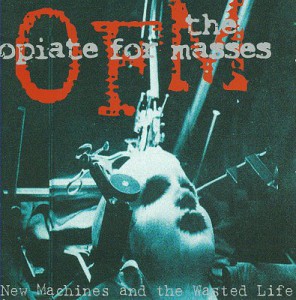|
A Few Thoughts After Reading
Theory of the Derive and Other Situationist Writings on the City, edited by Libero Andreotti and Xavier Costa for the 1996 Exhibition on the Situationists and Urbanism at the Barcelona Museum of Contemporary Art
Anarchists in the United States have had a rather slim portion of situationist literature available to them, and this has created a skewed view of of the actual thinking of this unorthodox marxist group. Even the most comprehensive collection in English (Ken Knabb’s Situationist International Anthology), is fairly limited in what early material it presents. This is what made Theory of the Derive and Other Situationist Writings on the City an interesting read. This anthology, published as part of an exhibit at the Barcelona Museum of Contemporary Art, emphasizes SI and pre-SI writings on architecture and urbanism. All of the writing is provocative. Some of it may disturb those who think of the situationists as libertarian in their outlook. The book clearly undermines the idea of a split between an artistic side of the SI on the one hand and a radical political side on the other. In fact, the writings of the most artistic members (and their attitudes toward their art projects) is drenched as much in marxism as in artisitc avant-gardism. In fact, I would argue that the latter was an outgrowth of the former for the artists of the SI. Though it is true that their marxism wasn’t orthodox, it was certainly crude at times, and often not even faintly libertarian. The cruder marxism was most evident in their unequivocal adulation of technological developments. Their ideas verged on a positive sort of technological determinism: industrial and post-industrial technology was supposed to provide the basis for human liberation. This led to science-fictionesque conceptions of vast, completely denatured urban landscapes with mobile, high-tech parts that could undergo perpetual transformations. These were to be environments where “the masses” would be able to exercise their collective creativity while “professional situationists” prepared the ambiences. Within these visions. living, breathing individuals seemed to get lost completely. There were only masses and machines. There is no questioning at all of technology or of the city as such. In fact, in the earliest writings, there isn’t even any deep questioning of expertise (hence the “professional situationists”). With the ejection of Constant and friends, and various encounters and new members, the SI critique did seem to deepen. Aspects of Constant’s ideas were rejcted, particular that of “professional situationists”. In addition, the SI developed a critique of “the masses”. In addition, the anti-individualist attitude, expressed in crude marxist terms in the early writings, was toned down, and certain situationists (Vaneigem in particular) even began to recognize subjectivity as lying in the individual. But their vision remained essentially marxist, with a basis in urban society and technology. Nonetheless, there are ideas worth looting from the situationists: the drift (derive*), psychogeography, misappropriation/cultural highjacking (detournement*), the revolution of everyday life, the spectacle,creative encounter with the spaces we pass through, the refusal of the static with its implication of constant transformation. Along this line, Vaneigem points out in his essay “Commentaries Against Urbanism” (in my opinion, one of the best essays in the book) that the shantytown dweller, with no professional training whatsoever, has more real knowledge of how to build the space in which he or she lives than any architect or urban planner, and to do so in a temporary fashion. No need for the vast mechanized urban landscapes imagined by Constant and friends. No need for the professional situationists. What the imagination already does among people on the margins now could only expand in surprising and beautiful directions in a world with no state, no economy, no experts and no abstract masses to squelch the imagination. |
